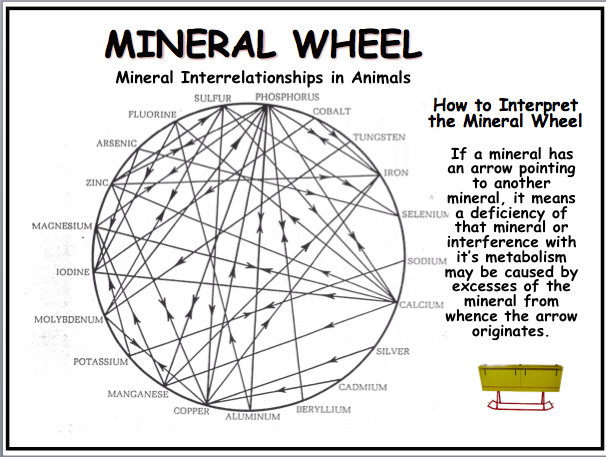By Richard J. Holliday, DVM
Wednesday, May 13, 2015 - Before domestication, our livestock lived a lifestyle markedly different from what they currently experience. They were free to roam over wide, naturally fertile areas. Many different plants with different nutrient and mineral profiles were available, and the animals could seek out plants that met their nutrient requirements. Mineral needs could be fine tuned by visiting naturally occurring salt or mineral licks. Thus, over a period of time they could selectively balance their mineral and nutritional needs.
It’s a lot different today, as several changes have negatively influenced the expression of our animal’s inherent nutritional wisdom:
- There is a great variation in mineral concentration in soils in different parts of the country, and soil depletion has resulted in lower nutritional value and mineral concentrations in crops and forages.
- Varying degrees of confinement restrict nutritional diversity as the animals are not able to seek out different plants to remedy their nutritional deficiencies.
- Our soils, crops, and feeds are contaminated with toxic GMOs, insecticides, and herbicides, such as glyphosate, that interfere with mineral adsorption.
- Animals have been selectively bred to produce or perform at levels never intended by nature, creating a demand for higher nutritional levels.
Unfortunately, researchers and nutritionists alike have little appreciation for individual variation as this concept does not fit into their computer models. They usually recommend feeding an all purpose, one-bag-fits-all mineral or to force feed a computer generated mineral by adding it to the basic ration. The excesses or imbalances thus created can have serious metabolic side-effects. (See Mineral Wheel, above) Eating dirt, chewing on wood or other abnormal appetites are attempts to secure some vital element or attain some nutritive balance that is not otherwise present in their diet. It should be considered a warning signal that something is amiss in the ration. Some consider it normal because it is so common. And it may be “normal” in the sense that it is appropriate, compensatory behavior for animals forced to subsist on a mineral deficient or imbalanced ration.
There is a great variation in the nutritional needs of individuals within a species and these needs vary to accommodate seasonal changes, reproductive cycles, changes in feed quality and others. Today, imbalances - deficiencies or excesses - of major, minor and trace minerals are one of the major factors underlying reduced animal health, production and reproduction.
Given the fact that all soils, and the various crops grown thereon, differ in their mineral content and that no two animals have the same needs, it is a difficult task to correct mineral imbalances. The solution is to provide a source of individual, self-selected, free-choice, cafeteria-style minerals and allow the animals to exercise their inherent nutritional wisdom to balance their mineral needs.
Feeding individual, self-selected cafeteria-style minerals has many benefits:
- It allows the animal to adjust for the mineral deficiencies of the present ration.
- It allows the animal to consume additional minerals, as necessary, to satisfy tissue deficiencies caused by previously unbalanced rations.
- It provides a safety net or early warning alarm if nutrition changes. Mineral deficiency affects animal performance shortly after mineral deprivation, but it may take several months before clinical signs of the deficiency become apparent.
- It improves production, reproduction, and longevity.
- It decreases the cost of health care and veterinary services.
BOTTOM LINE: We should use our nutritional knowledge to formulate rations, but also rely on the nutritional wisdom of animals to fine-tune their individual mineral needs. It doesn’t hurt to have two opinions...one from your nutritionist’s computer and one from the real experts, your animals. I will leave it to you to decide which one is the most reliable.
Learn More about ABC's Cafeteria Style Mineral Program Here
